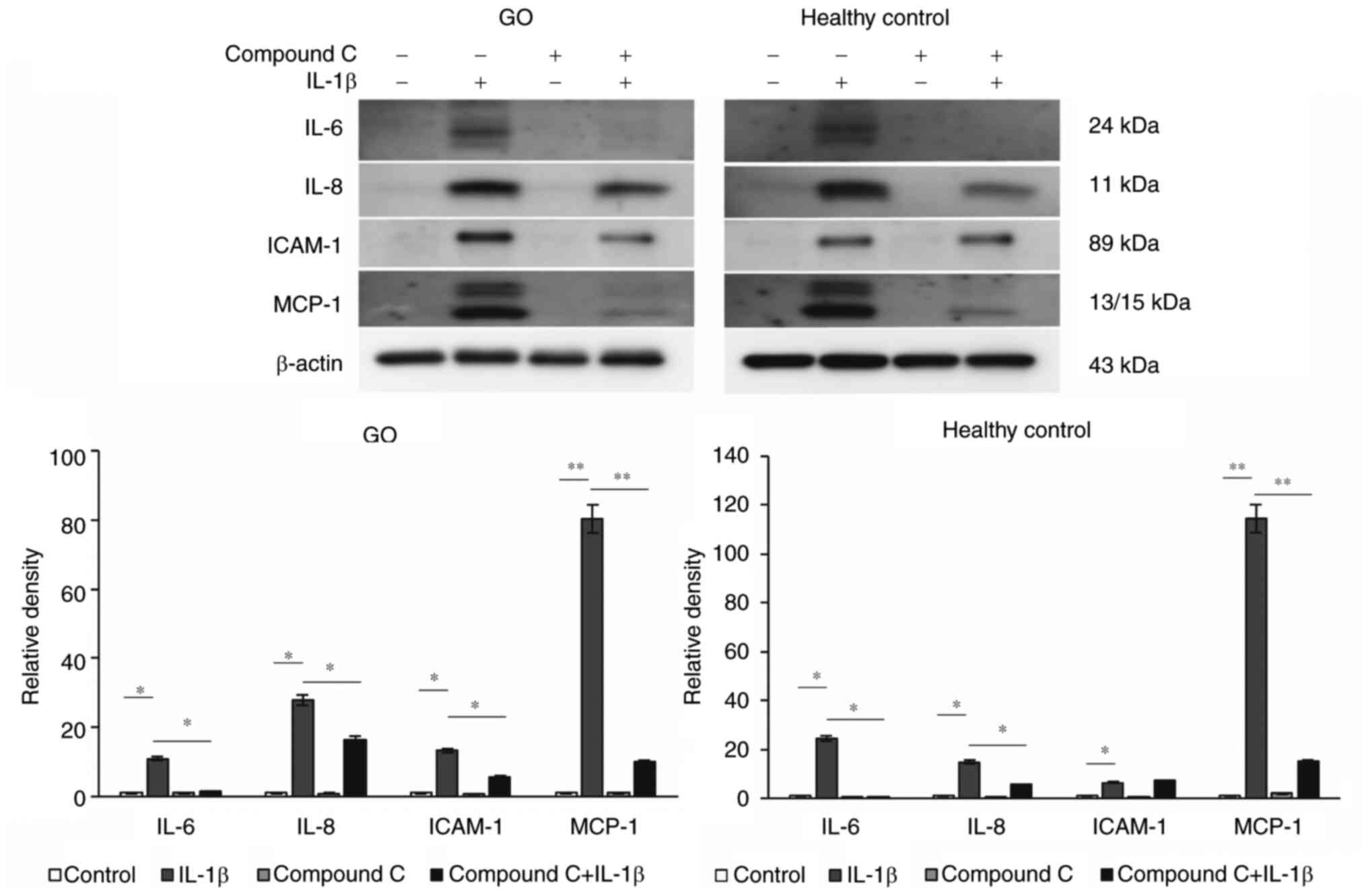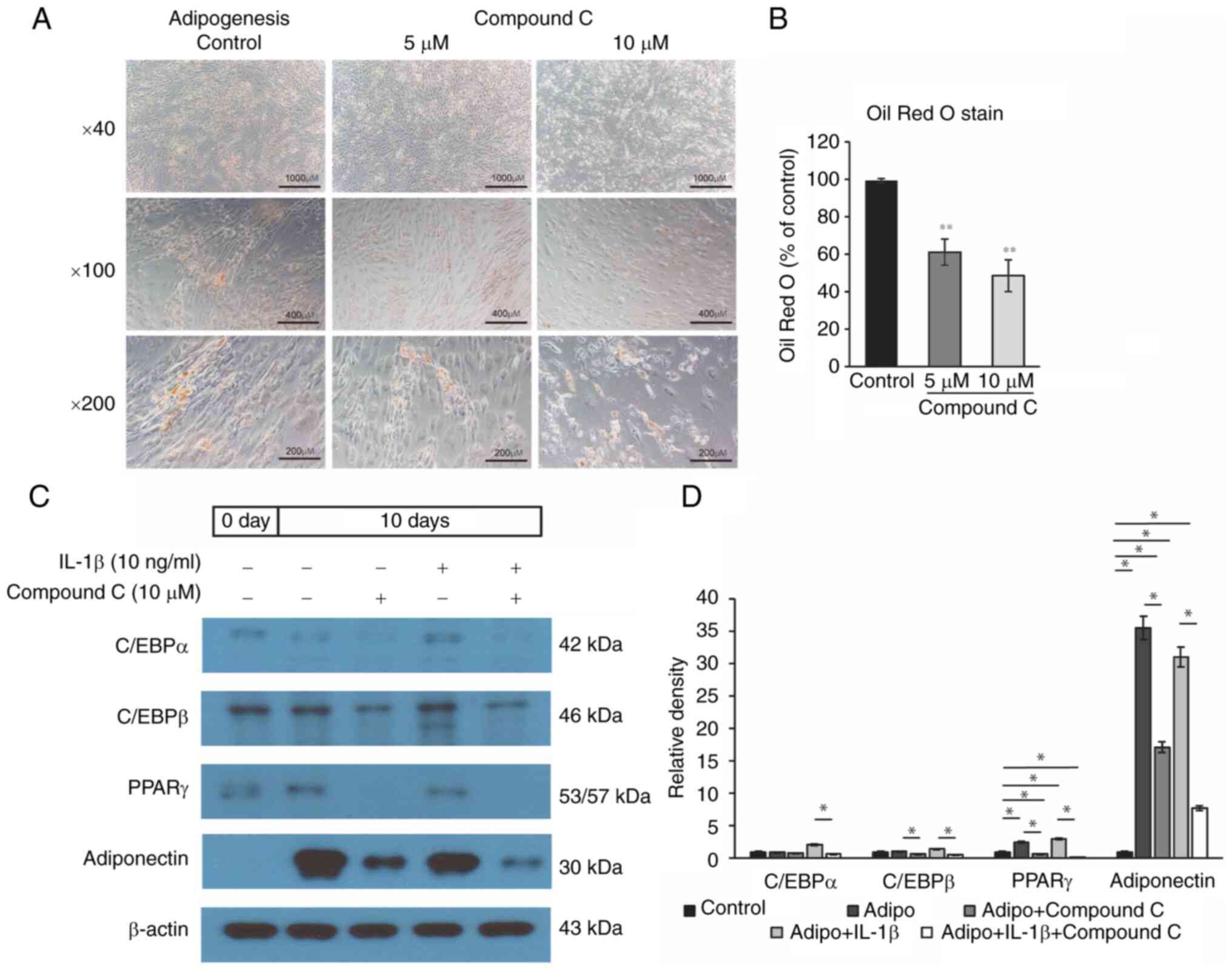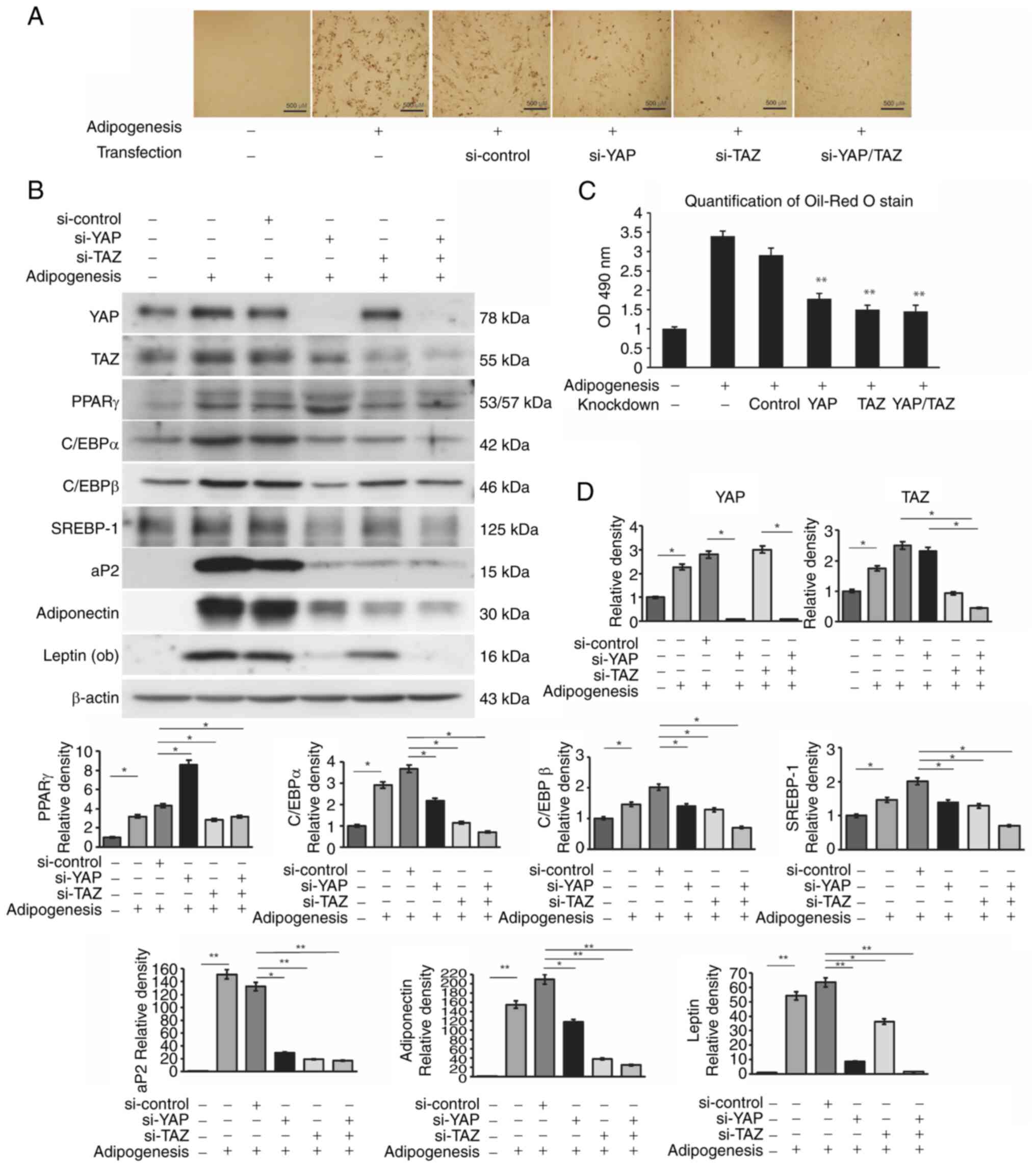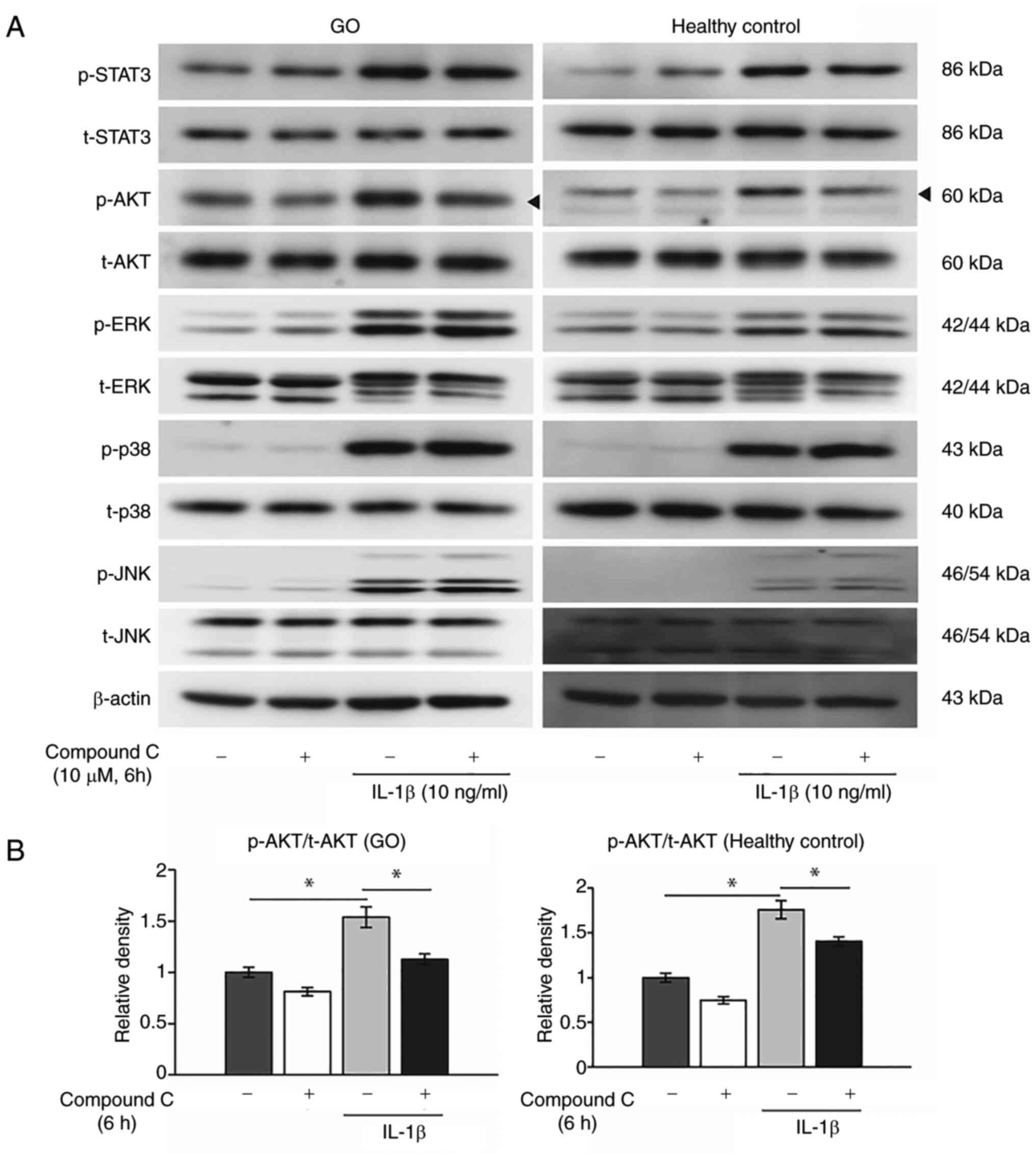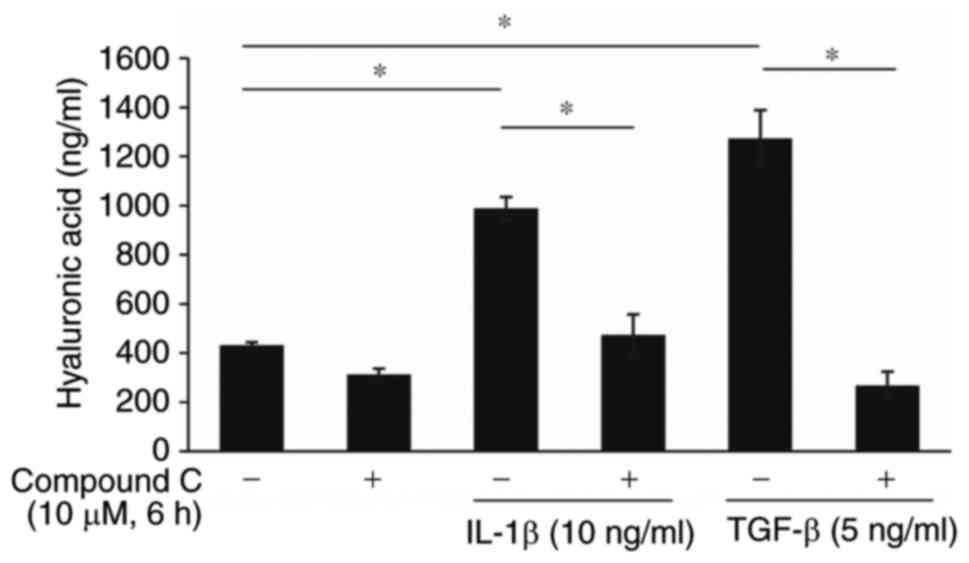|
1
|
Bahn RS: Graves' ophthalmopathy. N Engl J
Med. 362:726–738. 2010. View Article : Google Scholar : PubMed/NCBI
|
|
2
|
Khoo TK and Bahn RS: Pathogenesis of
Graves' ophthalmopathy: The role of autoantibodies. Thyroid.
17:1013–1018. 2007. View Article : Google Scholar : PubMed/NCBI
|
|
3
|
Cui X, Wang F and Liu C: A review of TSHR-
and IGF-1R-related pathogenesis and treatment of Graves'
orbitopathy. Front Immunol. 14:10620452023. View Article : Google Scholar : PubMed/NCBI
|
|
4
|
Huang Y, FangSLi D, Zhou H, Li B and Fan
X: The involvement of T cell pathogenesis in thyroid-associated
ophthalmopathy. Eye (Lond). 33:176–182. 2019. View Article : Google Scholar : PubMed/NCBI
|
|
5
|
Zhang L, Bowen T, Grennan-Jones F, Paddon
C, Giles P, Webber J, Steadman R and Ludgate M: Thyrotropin
receptor activation increases hyaluronan production in
preadi-pocyte fibroblasts: Contributory role in hyaluronan
accumu-lation in thyroid dysfunction. J Biol Chem. 284:26447–26455.
2009. View Article : Google Scholar : PubMed/NCBI
|
|
6
|
Weiler DL: Thyroid eye disease: A review.
Clin Exp Optom. 100:20–25. 2017. View Article : Google Scholar : PubMed/NCBI
|
|
7
|
Genere N and Stan MN: Current and emerging
treatment strategies for Graves' orbitopathy. Drugs. 79:109–124.
2019. View Article : Google Scholar : PubMed/NCBI
|
|
8
|
Bartalena L, Kahaly GJ, Baldeschi L, Dayan
CM, Eckstein A, Marcocci C, Marinò M, Vaidya B and Wiersinga WM:
EUGOGO† The 2021 European Group on Graves' orbitopathy
(EUGOGO) clinical practice guidelines for the medical management of
Graves' orbitopathy. Eur J Endocrinol. 185:G43–G67. 2021.
View Article : Google Scholar : PubMed/NCBI
|
|
9
|
Kamboj A, Harrison AR and Mokhtarzadeh A:
Emerging therapies in the medical management of thyroid eye
disease. Front Ophthalmol (Lausanne). 3:12959022023. View Article : Google Scholar : PubMed/NCBI
|
|
10
|
Douglas RS, Kahaly GJ, Patel A, Sile S,
Thompson EHZ, Perdok R, Fleming JC, Fowler BT, Marcocci C, Marinò
M, et al: Teprotumumab for the treatment of active thyroid eye
disease. N Engl J Med. 382:341–352. 2020. View Article : Google Scholar : PubMed/NCBI
|
|
11
|
Park JW and Yoon JS: A review of novel
medical treatments for thyroid eye disease. Korean J Ophthalmol.
38:249–259. 2024. View Article : Google Scholar : PubMed/NCBI
|
|
12
|
Garcia D and Shaw RJ: AMPK: Mechanisms of
cellular energy sensing and restoration of metabolic balance. Mol
Cell. 66:789–800. 2017. View Article : Google Scholar : PubMed/NCBI
|
|
13
|
Umezawa S, Higurashi T and Nakajima A:
AMPK: Therapeutic target for diabetes and cancer prevention. Curr
Pharm Des. 23:3629–3644. 2017. View Article : Google Scholar : PubMed/NCBI
|
|
14
|
Huang R, Guo F, Li Y, Liang Y, Li G, Fu P
and Ma L: Activation of AMPK by triptolide alleviates nonalcoholic
fatty liver disease by improving hepatic lipid metabolism,
inflammation and fibrosis. Phytomedicine. 92:1537392021. View Article : Google Scholar : PubMed/NCBI
|
|
15
|
Kahn BB, Alquier T, Carling D and Hardie
DG: AMP-activated protein kinase: Ancient energy gauge provides
clues to modern understanding of metabolism. Cell Metab. 1:15–25.
2005. View Article : Google Scholar : PubMed/NCBI
|
|
16
|
Zhou G, Myers R, Li Y, Chen Y, Shen X,
Fenyk-Melody J, Wu M, Ventre J, Doebber T, Fujii N, et al: Role of
AMP-activated protein kinase in mechanism of metformin action. J
Clin Invest. 108:1167–1174. 2001. View
Article : Google Scholar : PubMed/NCBI
|
|
17
|
Liu X, Chhipa RR, Nakano I and Dasgupta B:
The AMPK inhibitor compound C is a potent AMPK-independent
antiglioma agent. Mol Cancer Ther. 13:596–605. 2014. View Article : Google Scholar : PubMed/NCBI
|
|
18
|
Vucicevic L, Misirkic M, Janjetovic K,
Vilimanovich U, Sudar E, Isenovic E, Prica M, Harhaji-Trajkovic L,
Kravic-Stevovic T, Bumbasirevic V and Trajkovic V: Compound C
induces protective autophagy in cancer cells through AMPK
inhibition-independent blockade of Akt/mTOR pathway. Autophagy.
7:40–50. 2011. View Article : Google Scholar : PubMed/NCBI
|
|
19
|
Yoon JS, Lee HJ, Choi SH, Chang EJ, Lee SY
and Lee EJ: Quercetin inhibits IL-1β-induced inflammation,
hyaluronan production and adipogenesis in orbital fibroblasts from
Graves' orbitopathy. PLoS One. 6:e262612011. View Article : Google Scholar : PubMed/NCBI
|
|
20
|
Kim SE, Lee JH, Chae MK, Lee EJ and Yoon
JS: The role of sphingosine-1-phosphate in adipogenesis of Graves'
orbitopathy. Invest Ophthalmol Vis Sci. 57:301–311. 2016.
View Article : Google Scholar : PubMed/NCBI
|
|
21
|
Longo CM and Higgins PJ: Molecular
biomarkers of Graves' ophthalmopathy. Exp Mol Pathol. 106:1–6.
2019. View Article : Google Scholar : PubMed/NCBI
|
|
22
|
Hardie DG: AMP-activated protein kinase: A
cellular energy sensor with a key role in metabolic disorders and
in cancer. Biochem Soc Trans. 39:1–13. 2011. View Article : Google Scholar : PubMed/NCBI
|
|
23
|
Wang D, Yang L and Liu Y: Targeting AMPK
signaling in the liver: Implications for obesity and type 2
diabetes mellitus. Curr Drug Targets. 23:1057–1071. 2022.
View Article : Google Scholar : PubMed/NCBI
|
|
24
|
Han YE, Hwang S, Kim JH, Byun JW, Yoon JS
and Lee EJ: Biguanides metformin and phenformin generate
therapeutic effects via AMP-activated protein
kinase/extracellular-regulated kinase pathways in an in vitro model
of Graves' orbitopathy. Thyroid. 28:528–536. 2018. View Article : Google Scholar : PubMed/NCBI
|
|
25
|
Xu Z, Ye H, Xiao W, Sun A, Yang S, Zhang
T, Sha X and Yang H: Metformin attenuates inflammation and fibrosis
in thyroid-associated ophthalmopathy. Int J Mol Sci. 23:155082022.
View Article : Google Scholar : PubMed/NCBI
|
|
26
|
Lee Y, Park BH and Bae EJ: Compound C
inhibits macrophage chemotaxis through an AMPK-independent
mechanism. Biochem Biophys Res Commun. 469:515–520. 2016.
View Article : Google Scholar : PubMed/NCBI
|
|
27
|
Labuzek K, Liber S, Gabryel B, Bułdak L
and Okopień B: Ambivalent effects of compound C (dorsomorphin) on
inflammatory response in LPS-stimulated rat primary microglial
cultures. Naunyn Schmiedebergs Arch Pharmacol. 381:41–57. 2010.
View Article : Google Scholar : PubMed/NCBI
|
|
28
|
Xinqiang Y, Yuanyuan J, Zhipeng Y, Jie K,
Xiao T, Yumeng H, Chenxi Z, Shiyu D, Mingpeng Y, Yanlin Z, et al:
Systemic administration of dorsomorphin relieves inflammatory
nociception in the mouse formalin test. Int Immunopharmacol.
113:1093372022. View Article : Google Scholar : PubMed/NCBI
|
|
29
|
Peyton KJ, Yu Y, Yates B, Shebib AR, Liu
XM, Wang H and Durante W: Compound C inhibits vascular smooth
muscle cell proliferation and migration in an AMP-activated protein
kinase-independent fashion. J Pharmacol Exp Ther. 338:476–484.
2011. View Article : Google Scholar : PubMed/NCBI
|
|
30
|
Madhu V, Dighe AS, Cui Q and Deal DN: Dual
inhibition of activin/Nodal/TGF-β and BMP signaling pathways by
SB431542 and dorsomorphin induces neuronal differentiation of human
adipose derived stem cells. Stem Cells Int. 2016:10353742016.
View Article : Google Scholar : PubMed/NCBI
|
|
31
|
Boergermann JH, Kopf J, Yu PB and Knaus P:
Dorsomorphin and LDN-193189 inhibit BMP-mediated Smad, p38 and Akt
signalling in C2C12 cells. Int J Biochem Cell Biol. 42:1802–1807.
2010. View Article : Google Scholar : PubMed/NCBI
|
|
32
|
Shin HA, Park M, Banga JP and Lew H:
TGFβ-treated placenta-derived mesenchymal stem cells selectively
promote anti-adipogenesis in thyroid-associated ophthalmopathy. Int
J Mol Sci. 23:56032022. View Article : Google Scholar : PubMed/NCBI
|
|
33
|
Jang SY, Park SJ, Chae MK, Lee JH, Lee EJ
and Yoon JS: Role of microRNA-146a in regulation of fibrosis in
orbital fibroblasts from patients with Graves' orbitopathy. Br J
Ophthalmol. 102:407–414. 2018. View Article : Google Scholar : PubMed/NCBI
|
|
34
|
Gao Y, Zhou Y, Xu A and Wu D: Effects of
an AMP-activated protein kinase inhibitor, compound C, on
adipogenic differentiation of 3T3-L1 cells. Biol Pharm Bull.
31:1716–1722. 2008. View Article : Google Scholar : PubMed/NCBI
|
|
35
|
Dupont S, Morsut L, Aragona M, Enzo E,
Giulitti S, Cordenonsi M, Zanconato F, Le Digabel J, Forcato M,
Bicciato S, et al: Role of YAP/TAZ in mechanotransduction. Nature.
474:179–183. 2011. View Article : Google Scholar : PubMed/NCBI
|
|
36
|
Shen H, Huang X, Zhao Y, Wu D, Xue K, Yao
J, Wang Y, Tang N and Qiu Y: The Hippo pathway links adipocyte
plasticity to adipose tissue fibrosis. Nat Commun. 13:60302022.
View Article : Google Scholar : PubMed/NCBI
|
|
37
|
Ko J, Kim YJ, Choi SH, Lee CS and Yoon JS:
Yes-associated protein mediates the transition from inflammation to
fibrosis in Graves' orbitopathy. Thyroid. 33:1465–1475. 2023.
View Article : Google Scholar : PubMed/NCBI
|
|
38
|
Ríos M, Foretz M, Viollet B, Prieto A,
Fraga M, Costoya JA and Señarís R: AMPK activation by oncogenesis
is required to maintain cancer cell proliferation in astrocytic
tumors. Cancer Res. 73:2628–2638. 2013. View Article : Google Scholar : PubMed/NCBI
|
|
39
|
Kwon HJ, Kim GE, Lee YT, Jeong MS, Kang I,
Yang D and Yeo EJ: Inhibition of platelet-derived growth factor
receptor tyrosine kinase and downstream signaling pathways by
compound C. Cell Signal. 25:883–897. 2013. View Article : Google Scholar : PubMed/NCBI
|
|
40
|
Rao E, Zhang Y, Li Q, Hao J, Egilmez NK,
Suttles J and Li B: AMPK-dependent and independent effects of AICAR
and compound C on T-cell responses. Oncotarget. 7:33783–33795.
2016. View Article : Google Scholar : PubMed/NCBI
|
|
41
|
Kumar S, Nadeem S, Stan MN, Coenen M and
Bahn RS: A stimulatory TSH receptor antibody enhances adipogenesis
via phosphoinositide 3-kinase activation in orbital preadipocytes
from patients with Graves' ophthalmopathy. J Mol Endocrinol.
46:155–163. 2011. View Article : Google Scholar : PubMed/NCBI
|
|
42
|
Runyan CE, Schnaper HW and Poncelet AC:
The phosphatidylinositol 3-kinase/Akt pathway enhances
Smad3-stimulated mesangial cell collagen I expression in response
to transforming growth factor-beta1. J Biol Chem. 279:2632–2639.
2004. View Article : Google Scholar : PubMed/NCBI
|
|
43
|
Varelas X, Sakuma R, Samavarchi-Tehrani P,
Peerani R, Rao BM, Dembowy J, Yaffe MB, Zandstra PW and Wrana JL:
TAZ controls Smad nucleocytoplasmic shuttling and regulates human
embryonic stem-cell self-renewal. Nat Cell Biol. 10:837–848. 2008.
View Article : Google Scholar : PubMed/NCBI
|
|
44
|
Alarcón C, Zaromytidou AI, Xi Q, Gao S, Yu
J, Fujisawa S, Barlas A, Miller AN, Manova-Todorova K, Macias MJ,
et al: Nuclear CDKs drive Smad transcriptional activation and
turnover in BMP and TGF-beta pathways. Cell. 139:757–769. 2009.
View Article : Google Scholar : PubMed/NCBI
|




